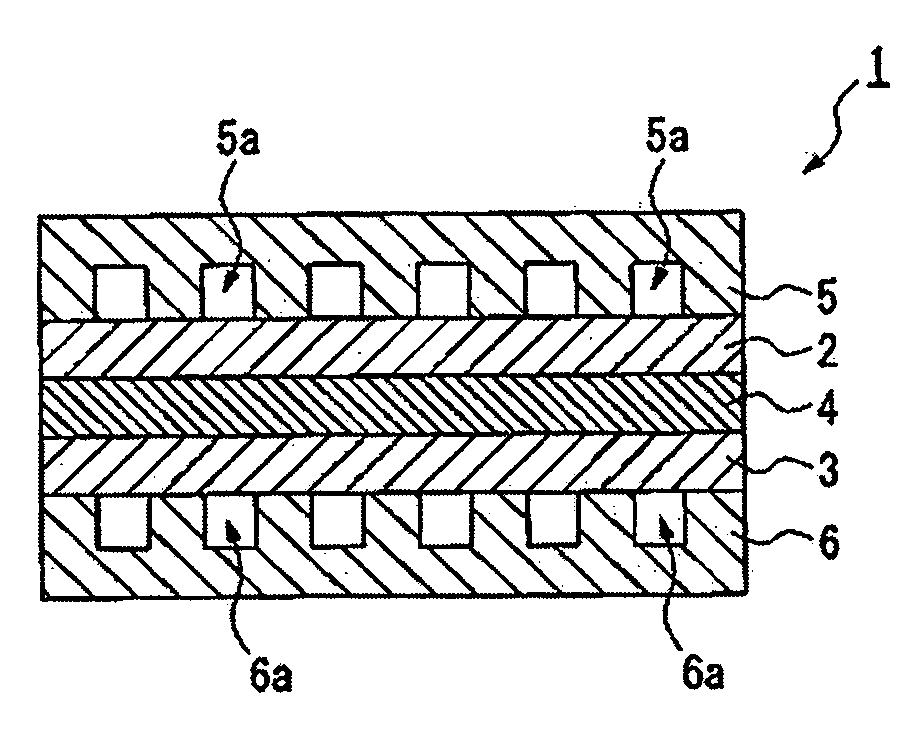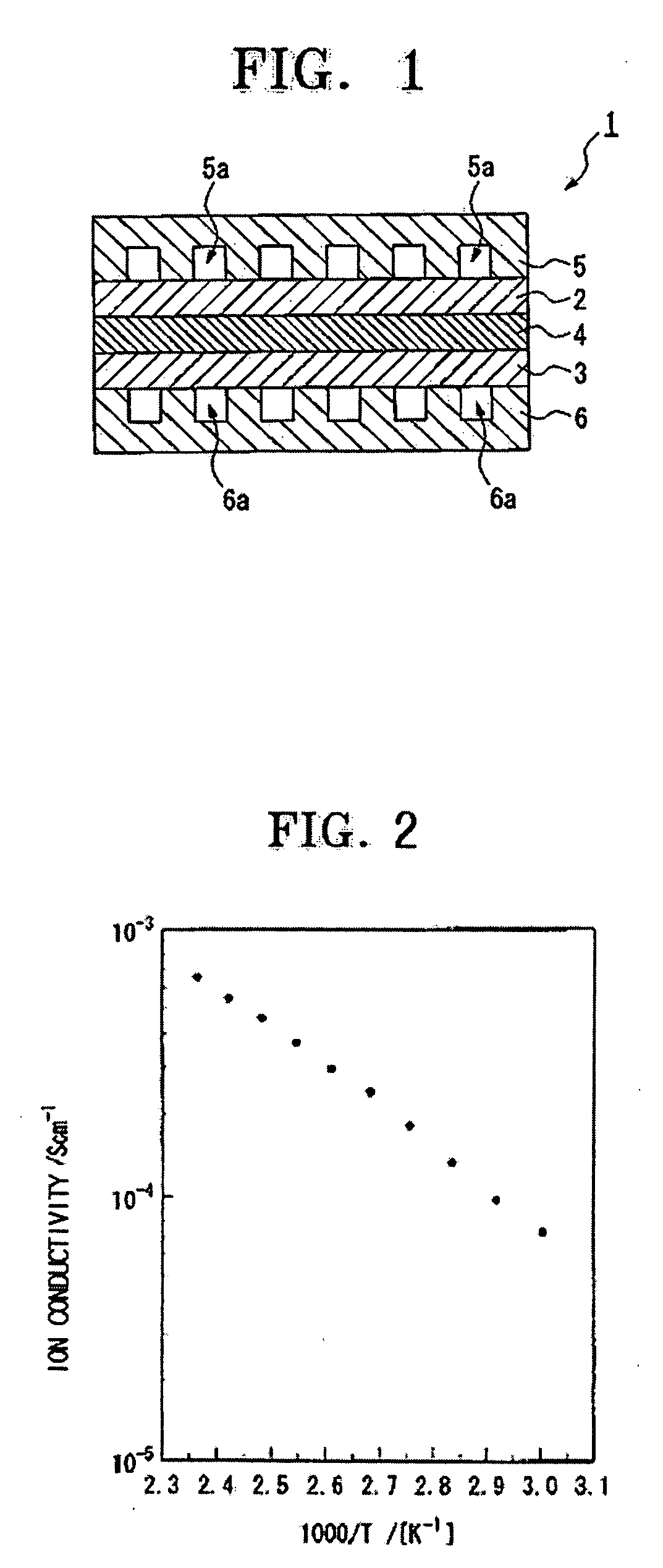Proton conductive solid polymer electrolyte and fuel cell
- Summary
- Abstract
- Description
- Claims
- Application Information
AI Technical Summary
Benefits of technology
Problems solved by technology
Method used
Image
Examples
example 1
[0047] Polypyridobisimidazole with the structure represented by Formula (2), where n2=100, shown below was synthesized using 2,3,5,6-tetraaminopyridine and 2,5-dihydroxyterephthalic acid according to the method described in the cited literature (polymer, vol. 39, No. 24 (1998), p. 5981-5986).
[0048] The obtained polypyridobisimidazole was dissolved in methanesulfonic acid, cast on a glass substrate, and dried at 120° C. for about 2 days to obtain a dark green film with a metallic luster and 15 μm thick. The film was doped with phosphoric acid by being directly immersed in 105% phosphoric acid at 60° C. for 25 min to form a solid polymer electrolyte membrane. The content of the phosphoric acid in the membrane was determined by the weight change of the film before and after the phosphoric acid immersion to be 185 mol % per repeat unit of the synthesized polypyridobisimidazole. The film was dried in vacuum at 120° C. for 2 hours before being weighed to avoid weighing any moisture that ...
example 2
[0051] A dark green film prepared in the same manner as in Example 1 was doped with a mixture of 105% phosphoric acid and phosphonic acid to obtain a solid polymer electrolyte membrane. The weight ratio of phosphoric acid to phosphonic acid was 3:2. The doping level of the acid was about 190 mol % per repeat unit of the synthesized polypyridobisimidazole.
[0052] A fuel cell was manufactured in the same manner as in Example 1 using the solid polymer electrolyte membrane of Example 2, and its power generation characteristics were investigated.
[0053] The ionic conductivity of the fuel cell at 150° C., and the open circuit voltage and the output voltage of the fuel cell at a current density of 0.3 A / cm2 are given in Table 1.
PUM
| Property | Measurement | Unit |
|---|---|---|
| Temperature | aaaaa | aaaaa |
| Temperature | aaaaa | aaaaa |
| Fraction | aaaaa | aaaaa |
Abstract
Description
Claims
Application Information
 Login to View More
Login to View More - R&D
- Intellectual Property
- Life Sciences
- Materials
- Tech Scout
- Unparalleled Data Quality
- Higher Quality Content
- 60% Fewer Hallucinations
Browse by: Latest US Patents, China's latest patents, Technical Efficacy Thesaurus, Application Domain, Technology Topic, Popular Technical Reports.
© 2025 PatSnap. All rights reserved.Legal|Privacy policy|Modern Slavery Act Transparency Statement|Sitemap|About US| Contact US: help@patsnap.com



